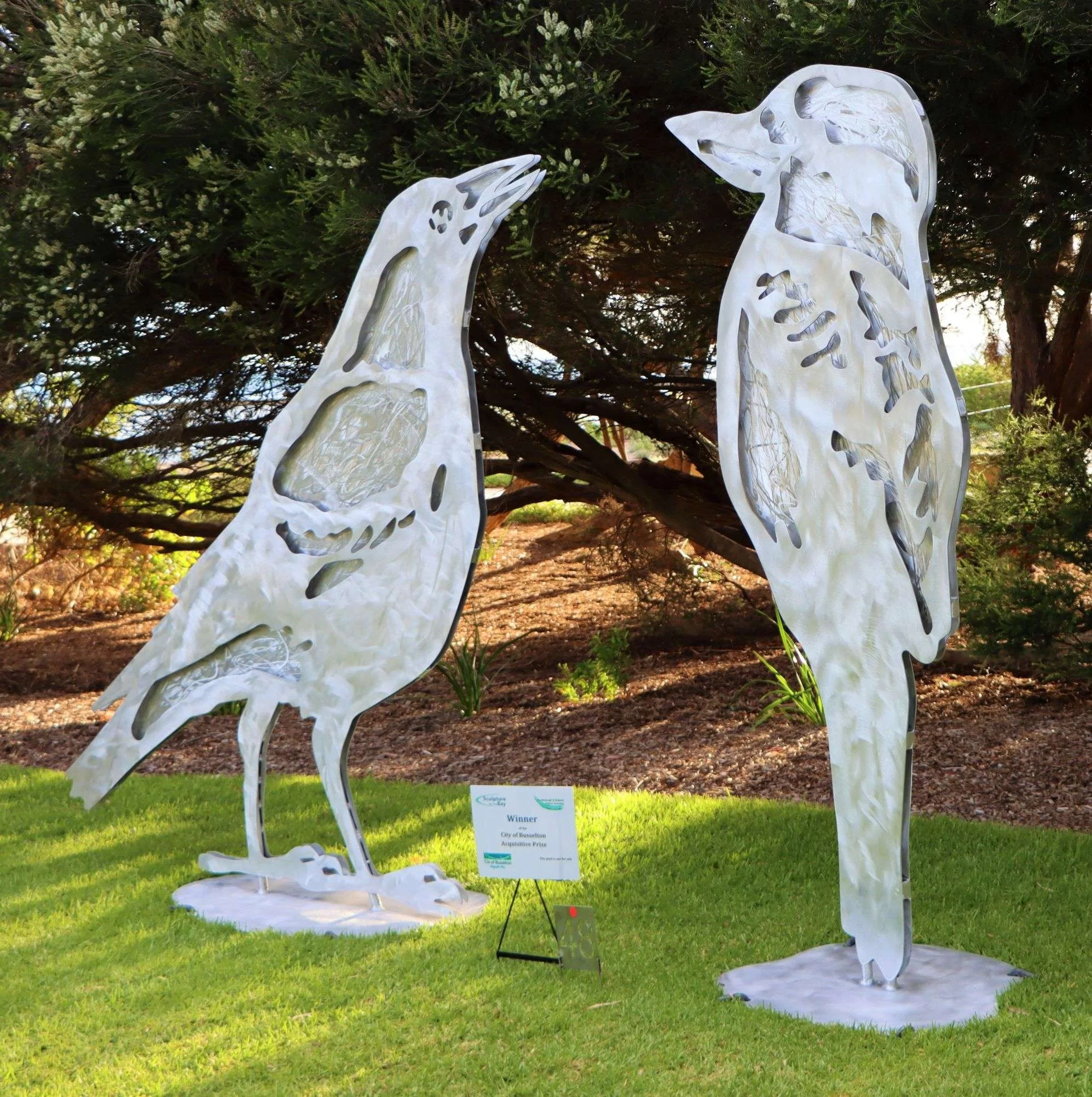Trolley Pole Banners
Artist: Tony Pankiw
Asset Type: Sculpture
Year of Work: 2006
Location: Stirling Hwy from Mountjoy Rd to Loftus St, Nedlands
Provenance: City of Nedlands
Image source City of Nedlands
Entry Statement Sculptures
Artist: Tony Pankiw
Asset Type: Sculpture, Community collaboration
Year of Work: 2008
Location: Manning Road, Waterford - Median Strip, West of Centenary Avenue
Provenance: City of South Perth
Description: This project was collaboration with Clontarf Aboriginal College, the Noongar community of the South Perth region, Curtin University and the City of South Perth.
Image source City of South Perth
The Enlightened Bicycles
Image source City of Wanneroo
Artist: Tony Pankiw
Asset Type: Sculpture
Year of Work: Unknown
Location: Willespie Drive (between shopping centre and primary school), Pearsall
Provenance: City of Wanneroo
Life in Somerly
Image source City of Wanneroo
Artist: Tony Pankiw
Asset Type: Sculpture
Year of Work: Unknown
Location: Tamarama Park, Tamarama Crescent, Clarkson
Provenance: City of Wanneroo
The Somer Tree
Image source City of Wanneroo
Artist: Tony Pankiw
Asset Type: Sculpture
Year of Work: Unknown
Location: Boranup Park, Boranup Avenue, Clarkson
Provenance: City of Wanneroo
Maggie and Kookaburra Face Off
Image source Sculpture by the Bay
Artist: Tony Pankiw
Asset Type: Sculpture
Year of Work: 2021
Location: Telstra Block
Provenance: City of Busselton
Shimmering Waters
Image source City of Belmont
Artist: Tony Pankiw
Asset Type: Sculpture
Year of Work: 2013
Location: Hardy Park, Great Eastern Highway, Belmont
Provenance: City of Belmont
Cascading Shelter: Shadows of the Forest
Image source Shire of Augusta Margaret River
Artist: Tony Pankiw
Asset Type: Public amenity
Year of Work: 2011
Location: Margaret River Cultural District
Provenance: Shire of Augusta Margaret River
Description: This architectural and artfully designed shelter reflects the shapes found in nature and provides a shelter that can be used in all seasons.
The roof of the shelter contains several concave structural shapes that serve two purposes.
Visually, these shapes aim to echo various birds’ wings, leaves and shapes found in the forest. It articulates our environment and echoes the roofline of neighbouring buildings. The roofline is also designed to capture rainwater and feed it into the adjacent rain garden.
From inside the shelter looking upwards, you can see leaf patterns that again reiterate the natural forest habitat.
The roof is constructed from aluminium, with the legs made from steel.
Image source Margaret River Art Trails













